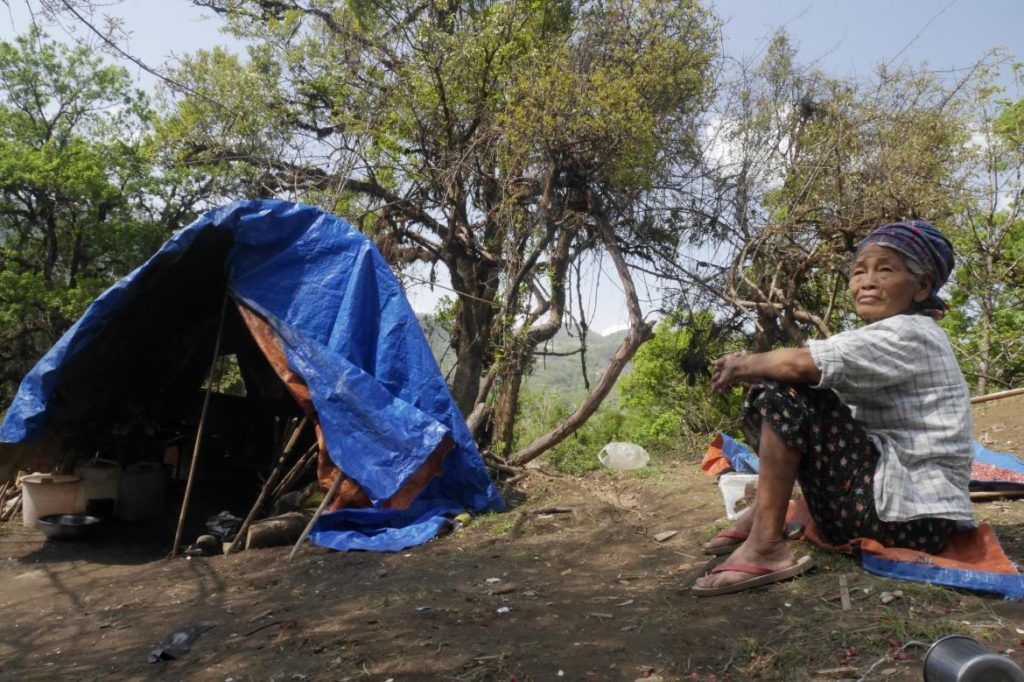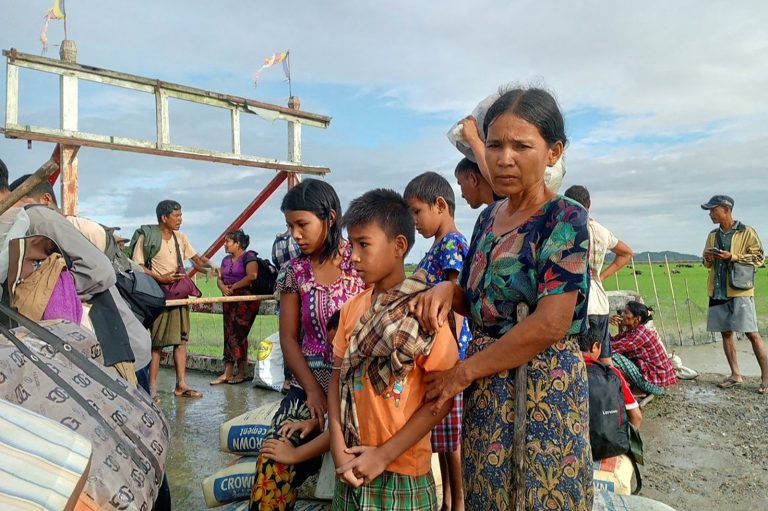After six years of war, a durable peace will require the meaningful participation of women and youth in the decision-making process.
By GARRY WALSH | FRONTIER
FOR MOST of the 87,000 people in displacement camps in Kachin State, the past six years have been a nightmare. Forced from their homes and longing to return, they have endured challenging conditions in cramped camps. Yet the past year has only seen prospects for peace diminish further, with an escalation in fighting and thousands being re-displaced.
There is a jarring disconnect between the political discussions at the 21st Century Panglong peace talks and the reality for those living in these internally displaced persons (IDP) camps. Women and young people feel particularly distant from the high-level negotiations at the conferences. Now, more than ever, we need to listen to the voices from the ground, hear their perspectives and wants, and make sure they are being meaningfully included.
To commemorate the sixth anniversary of the resumption of conflict in Kachin, Trócaire is launching a new report, Life on Hold. It makes bleak reading. Based on over 100 interviews, women displaced by the conflict describe their experiences over the past six years and their aspirations for the future.
Life on Hold illuminates the devastating consequences of the conflict: fleeing for their lives, losing loved ones, leaving all possessions behind, caring for family and facing widespread sexual violence. The report details harrowing experiences of the fighting and displacement, as well as the deprivations within IDP camps.
Support more independent journalism like this. Sign up to be a Frontier member.
Most women reported directly experiencing physical and sexual violence, and forced labour, or witnessed the occurrence of violence, torture, rape, or arbitrary detention of a close relative, extended family member, neighbour or villager.
Stuck in camps, lives have been “on hold” now for six years: access to healthcare and education is limited, food shortages are common, and domestic violence is prevalent. Trauma is pervasive, yet these same women demonstrate resilience and strength despite their situation.
Women want to return home but voiced their preconditions: landmines must be cleared, armed forces withdrawn from their villages, and economic support provided to resume and restart their lives. They expressed the need for justice for survivors of sexual violence. Despite feeling excluded from public meetings, discussions and decision-making in the IDP camps, there is unwavering enthusiasm among the women interviewed for participation in political and peace processes, and negotiations.
One participant said, “We should found a women’s peace group in the camps and elect our leader for that group. Then we can share and discuss information related to the peace process with the other IDPs.”
Another said, “Women need to participate in the peace process because women only know all the details of what women’s needs are.”
Trócaire hopes the report will not only highlight the struggles of displaced women, but also inspire action towards achieving gender-just peace and reconciliation. Progress has been made towards greater participation of women in peace negotiations, including a commitment to 30 percent of negotiators being women. This commitment is still not reflected in reality, though, women’s participation at the official Panglong and other negotiations remains much lower.
Alongside giving voice to displaced women, Trócaire is supporting women and young people to document their lives and express themselves through photography. “Let My Voice Be Heard” is a photography exhibition which will run from June 8 to 18 at Myanmar Deitta gallery in Yangon, showcasing the photographs and multimedia photo-stories of women and youth living in IDP camps along the border with China.
Along with the photographs, a series of multimedia photo-stories have been produced with the support of Yangon Photo Festival, two of which were screened as part of this year’s event in April, with one winning an award.
The photo-stories offer a unique insight into the lives of displaced women and youth. Some of the photographs portray the difficulties of being displaced, and the hardships endured by fleeing active conflict in early 2017. Other photographs demonstrate the resilience of communities in times of hardship; growing food in IDP camps, keeping active within their community through sport and games, and participating in religious life. The vibrancy of community life as it continues during the airstrikes and mortar fire can’t but inspire hope.
Fundamentally, to build a lasting and just peace in Kachin State, we need to listen to the voices of women and youth. Peace building needs to happen from the bottom up; it needs to be inclusive and empowering. Without the inclusion of the voices, hopes and needs of women and youth, and their meaningful participation in the decisions that will affect their lives, durable and just peace will remain elusive in Kachin.
Garry Walsh is head of development programmes at Trócaire Myanmar. The organisation’s activities are funded through a €7 million grant from the European Union, as part of the Durable Peace Programme. The views in this article are those of the author and in no way represent those of the European Union.







